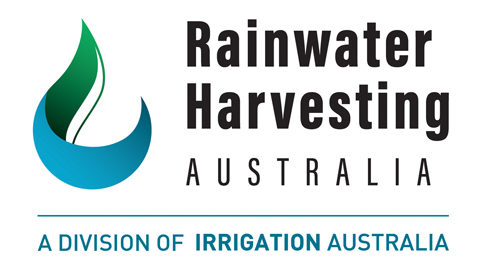Michael Smit, Kingspan Water and Energy
Rainwater harvesting would appear to be an efficient solution providing suitable water quality for many household uses[1] and stormwater management at source. One in four households in Australia has a rainwater tank[2]. Despite this, there is little implementation of rainwater harvesting by the mainstream water industry and there is a perception that capturing rain from the roof to be used onsite is more expensive than the infrastructure network we use to deliver water to our buildings.
The costs and benefits of distributed solutions such as rainwater harvesting for water management can be assessed very differently based on different water management perspectives/paradigms and their underlying boundary conditions[3]. Many aspects of this discussion also apply to demand management/water efficiency.
A ‘big water’ perspective
A big water perspective is based on an understanding of the operational and capital costs and the assets of large water utilities. Many large water utilities operate in a neo-liberal context as corporations with explicit business objectives[4].
Rainwater harvesting does not fit this model well. Big water is focussed on large central infrastructure for water supply and wastewater. Big water operates at the metropolitan scale with methodologies based on city-wide averages. Rainwater harvesting is a demand management and at-source stormwater management distributed solution that operates at the individual building scale. Rainwater harvesting does not seem to fit a water utility business model, it does not contribute to short term revenue or contribute to the regulatory asset base and a return on capital for long-term revenue. In this model the assumed cost of utility water is around $2/kL, making it difficult for rainwater harvesting to be viable by comparison[5].
There is considerable discussion and application of Integrated Water Management principles in Australia. However, if the underlying assumptions and boundary conditions of the big water perspective are applied in this process it seems unlikely that different decisions will be made about rainwater harvesting and water efficiency.
Systems Framework, Sustainable buildings perspective
By contrast, when considering urban areas as an integrated system, different costs and benefits emerge. A different perspective is based on the systems framework analysis by Peter Coombes looking at the whole urban water cycle including water, sewage, stormwater and local waterways in a single iterative model testing different scenarios.
Taking a systems view encourages consideration at different scales particularly the famous ‘bottom-up’ perspective of Coombes and Barry[1]. The behaviour of individual buildings over long periods are shown to be a major determinant of regional behaviour, quite small changes such as water-efficient appliances and small, well-utilised rainwater tanks can have major implications for long term water infrastructure decisions and stormwater impacts across the whole city[2]. The experience of the NSW BASIX state environmental planning policy[3] suggests sustainability performance measures for individual buildings can be effective at delivering positive cost-benefit sustainable outcomes at multiple scales when built into the land use development process2.
Systems framework analysis by Coombes suggests that the spatial costs of water and sewage services are high[4]. Water is heavy and transporting it long distances from treatment plants to end-users, and then to sewage treatment plants is expensive. Combined transport costs for water and sewage will vary up to $16/kL in different spatial locations as distances from the treatment plants and changes in elevation increase. Systems analysis demonstrates that real spatial costs are obscured by assumptions about postage stamp pricing and average costs across the urban area. Decentralised solutions such as rainwater harvesting and water efficiency can compete with utility water in spatially specific urban locations.
The most significant change in the last decade has been our understanding of the damage done by urban stormwater and the role rainwater harvesting plays in reducing that damage[5]. The damage is not just increasing minor flood damage but waterway flow regimes and pollutant levels. Increasing intensity of rain events combined with increased impervious areas in existing urban areas, population increase, outdated stormwater infrastructure and fewer opportunities for trees and grass suggests that some of our capital cities are not meeting the challenges of urban stormwater[6][7]. Much of this impact is from smaller, more regular rain events. This is a difficult problem to resolve as retrofitting stormwater infrastructure into existing urban areas is disruptive and expensive. Engineers Australia has released the Australian Rainfall and Runoff Guidelines (ARR) 2019 as a national standard for stormwater management and specifically reference rainwater harvesting as a tool for stormwater volume reduction[8]. Volume reduction through rainwater harvesting helps address flooding, pollutant levels and harvesting opportunities according to ARR 2019. Some municipal experience in Australia is that rainwater harvesting and increased permeable surfaces are a practical and cost-effective stormwater management strategy at the lot level and a preferred solution in built-up areas[9].
An important discussion is the impact of urban stormwater on local waterway flow regimes. The shift from predominantly slow-moving groundwater flow in waterways in the natural water cycle to predominantly fast-moving surface flow/low groundwater flow in urban water cycles has arguably seriously degraded our urban waterways[1]. Rainwater harvesting for volume reduction is being used to try and protect and even restore natural flow regimes in local waterways on our urban fringes[2][3].
Using a systems framework Coombes and Smit analysed the impact of including rainwater harvesting to meet sustainable development targets for planning and building and began to estimate the combined benefits of local water sources, reduced water supply infrastructure needs and stormwater flooding and pollutant benefits. Coombes found that for Melbourne the net benefits of a sustainable buildings approach were $5.95B including a reduction in water bills of $1B each year by 2050 compared to a Business as Usual option[4].
